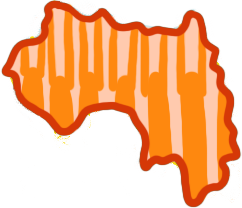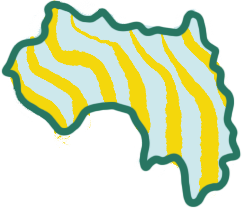I ni ke! Welcome to the Beginner Maninka course! Thanks for signing up.
This introduction will give you an overview before you diving into things.
Me!
I’m Coleman. My West African adoptive nickname that I received while in the Peace Corps is Adama and my first host family’s last name was Jalo (Fr. Diallo), so some people call me “Adama Jalo.”
I’m the founder of An ka taa and I’ve been learning and studying Manding varieties like Maninka, Bambara and Jula since 2009 when I first arrived in Burkina Faso.
I’m a linguist anthropologist by training; I received my PhD in Educational Linguistics from the University of Pennsylvania and I wrote a dissertation about an important social movement of Manding-language activists in West Africa.
You can learn more about me as a teacher and a researcher at colemandonaldson.com or by watching this video about “Why I speak and teach Bambara/Jula/Maninka”.
Knowledge, Pace and Schedule
This course assumes that you have zero knowledge of Maninka. It can be done at your own pace.
By my estimate the course materials require roughly 30 hours of time to complete. So, if you don’t mind taking in a lot of material, you can complete the course’s materials in about one month by studying for roughly one hour a day. But that’s very fast and a lot of material to absorb, so you’ll likely want to work through things a bit slower. On the other hand, if you already know some Bambara, Jula or other Manding variety, you’ll likely be able to move a bit quicker by skipping sections or just breezing through exercises, etc.
For those that find a specific timeline helpful, I have created a 12-week schedule that you can follow.
Maninka vs Manding vs Bambara/Jula
The course focuses primarily on so-called standard Maninka as spoken in Guinea. Other times in the course, you’ll hear me refer to “Manding”; this is the catch-all term for the larger language-dialect continuum of which Maninka, Bambara and Jula are all a part. Because yes, when you learn Maninka, you are actually opening the door to a much broader language that is spoken across much of western West Africa!
Organization
The course is broken up into four units. Each unit is made up of three sections:
-
Vocab: A cumulative list of all the Maninka words and expressions which you are assigned bit-by-bit through the unit, so that you can easily study and learn all of them in one place by the end of the unit.
-
Grammar & Practice: The heart of each unit. Divided into specific subsections (e.g., “Verbs”, “Adjectives”, etc.) which are tackled through a mix of different kinds of assignments:
-
Grammar: A chapter from the Grammar Manual, a virtual book that combines video lectures with a written text, audio flashcards and interactive exercises.
(NOTE: The order in which you are assigned the Grammar chapters in the course may differ from that of the Grammar Manual itself; that is, you may read Chapter 3 in Unit 1 and then later have to read Chapter 2 in Unit 2, for instance. This is because I made the videos and their chapters in one particular order, but I find it better to teach them in a slightly different order.)
-
Workbook: A chapter from the Workbook, a virtual book of audio and text-based dialogs and exercises
(NOTE: The order in which you are assigned the Workbook chapters may also differ from that of the Workbook itself. Again, this is because I made the chapters in one order, but I find it better to assign them in a slightly different order.)
-
Speaking: A video assignment where you record and submit a short video responding to a prompt and examples from me or other students.
(NOTE: You’ll get further instructions on how this works when you get to the first Speaking activity in Unit 1. But if you are curious, here they are.)
-
-
Quiz/Exam: A web-based assessment that uses audio, writing, fill-in-the-blank and multiple-choice questions to make sure that you master the grammar and vocabulary of each unit and, eventually, the whole course.
If you don’t want to follow the course’s proposed order, then you can also consult the Grammar Manual, the Workbook or any of the course material on their own in whatever order you want. There are links on the course’s start page.
Solo vs Supervised
This course can be pursued in one of two ways:
- Solo: Completely on your own. In this case, you won’t get any feedback on certain free-form questions and assignments, since, a computer can’t grade them properly.
- Supervised: With grading and feedback from me, Coleman! In this, you must submit various assignments as part of your pursuit of the Course Certificate.
In any case, no need to wait to get started! :-)
Spelling
The Maninka writing system used to teach this course is based on the Latin-based orthography that is officially in use in Guinea. There may be a few minor deviations from what is promoted by the Guinean government, but it’s nothing major that you should worry about at this early stage. Why? For one, few speakers of Maninka respect official Latin-based orthography and spelling when writing in the language themselves. And then: have you ever failed to understand an English language text because it was written using British spelling instead of American spelling? Probably not.
(NOTE: Through the course, whenever you need to type in Maninka, a little pop-up should appear that makes it easy to type the “special letters” [ɛ, ɔ, ɲ] without having to download anything. But if you want to be able to type on your own from your phone or other computer programs now or in the future, refer to this page on “How to type in Bambara.” [Yes, it says "Bambara", but it is the same tool you need for Maninka too!])
Community
There’s two ways to connect with me and other students of Bambara:
- Discord Server: a good place to meet, practice and connect with other Bambara learners (and potentially me) via real-time text, voice, or video chat.
- Forum Study Space: a good place for connecting with me and other learners via asynchronous written conversation in Bambara via private categories that are only open to AKT students like you!
Final words
Ayiwa! Alright!
That should be enough of an intro; good luck and thanks for signing up for the course!
If you run into any issues, please don’t hesitate to email me at coleman [at] ankata [dot] com.
Ala ye maninkakan-karan diya! May God make the study of Maninka pleasing!




